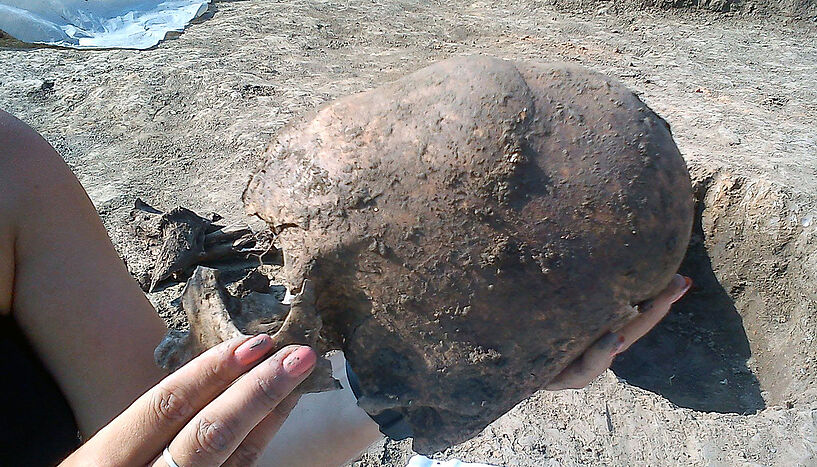Ancient Skeletons from Croatia Discovered with Alien-Like Heads

Ancient Skeletons from Croatia Discovered with Alien-Like Heads
Three ancient corpses have been discovered by archaeologists in Croatia, and two of them have pointed purposely disfigured heads. Each of the skulls had been combined into a distinct form, maybe to indicate which ethnic group each one belonged to.
The practice of artificial cranial deformation has been carried out all throughout the world, from South America to Eurasia and Africa. It involves molding a person’s skull when the bones are still flexible during infancy, such as by employing tight headdresses, bandages, or stiff instruments.
Different ancient societies used the procedure for a variety of purposes, including as expressing social rank or making what they considered to be a more attractive skull. According to a recent Live Science piece, the oldest recorded incidence of this technique took place in ancient China 12,000 years ago, but it’s not certain if it spread from there or if it originated independently in other regions of the world.

In this instance, three bones were discovered in a burial hole in 2013 at the Hermanov vinograd archaeological site in Croatia. They used a variety of techniques to evaluate the skeletons between 2014 and 2017, including DNA analysis and radiographic imaging, which uses radiation to view the interior of an item like a skull.
The bones were all identified as men who had died between the ages of 12 and 16, according to their examination. Although they all had signs of starvation, that was not necessarily how they perished.
According to lead author Mario Novak, a bioarchaeologist at the Institute for Anthropological Research in Zagreb, Croatia, they may have had “some form of sickness that killed them rapidly and didn’t leave any marks on their bones,” like plague.
According to Novak, the archaeologists didn’t discover any objects in the tomb that may have revealed the boys’ social standing.
The three had also lived throughout the Great Migration Period, which was “a very difficult period in Europe’s history,” according to Novak.
The analysis also indicated that they had done so between A.D. 415 and 560. Following the fall of the Roman Empire, whole new populations and cultures started to immigrate to Europe, becoming the nucleus of the contemporary European states. In other words, this time period laid the groundwork for modern-day Europe, according to Novak.
In fact, the ancient trio’s DNA examination showed that one of them was West Eurasian, another was Near Eastern, and the third was East Asian.

The boy who was of near-Eastern ancestry had a circular-erect type cranial deformation, which means that the frontal bone behind the forehead was flattened and the height of the skull was “significantly increased,” Novak said. The boy who likely came from West Eurasia didn’t have any skull deformation, and the boy with East Asian ancestry had a skull with an “oblique” deformation, which means the skull was elongated diagonally upward.”We propose that different skull deformation types in Europe were used as a visual indicator of association
with a certain cultural group,” Novak said. As of yet, it’s unclear what cultural groups they belonged to, though the East Asian boy could have been a Hun.
Now, Novak and his team hope to find more samples of cranial deformation from Europe to understand this phenomenon on a larger scale.
Archaeologists have unearthed three ancient skeletons in Croatia — and two of them had pointy, artificially deformed skulls. Each of those skulls had been melded into a different shape, possibly as a way to show they belonged to a specific cultural group. Artificial cranial deformation has been practiced in various parts of the world.